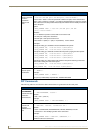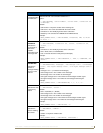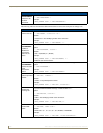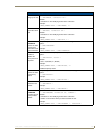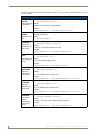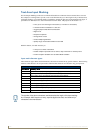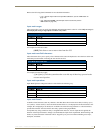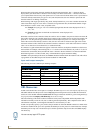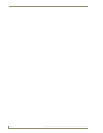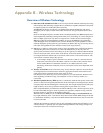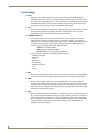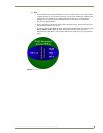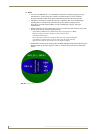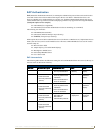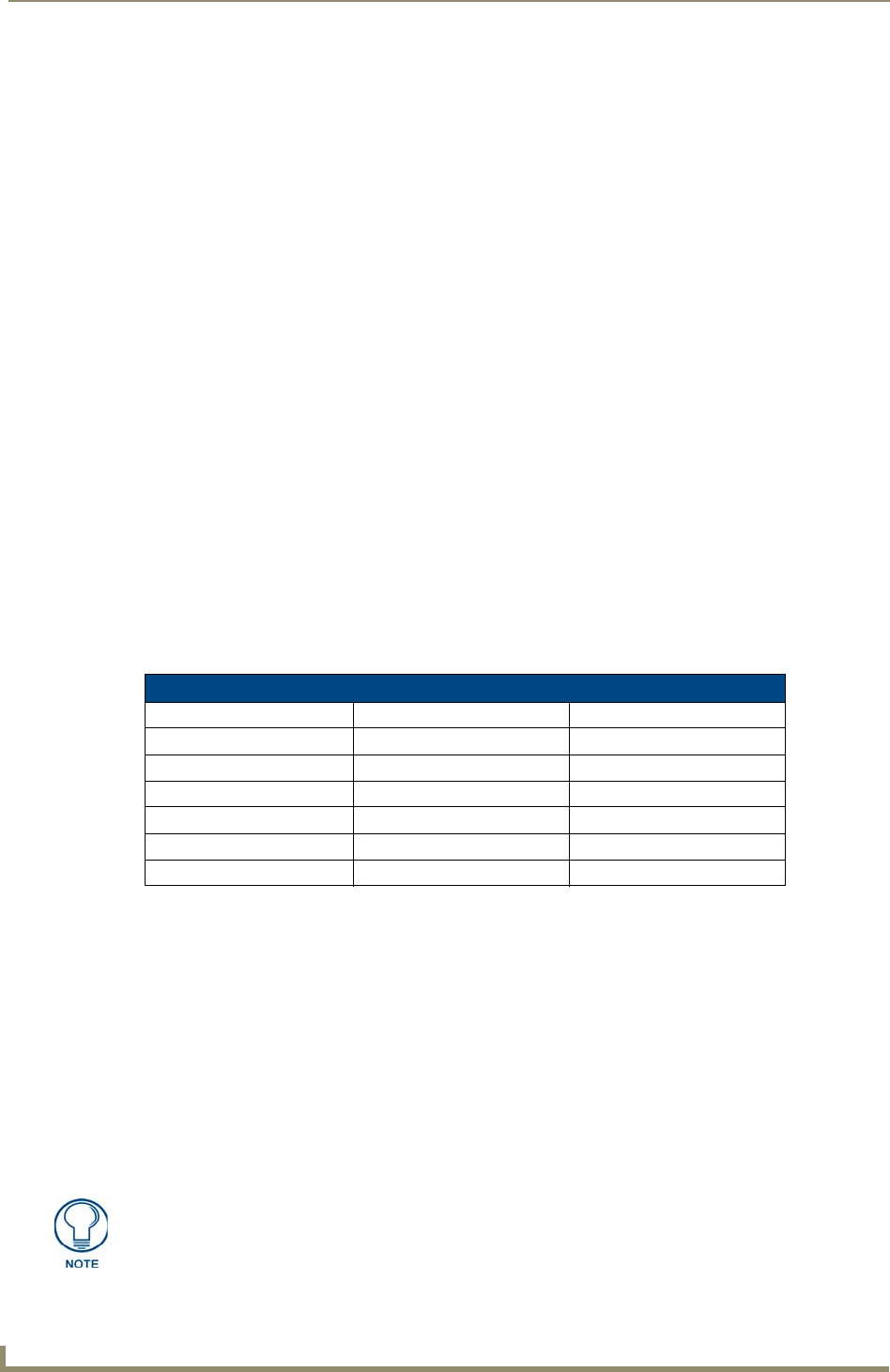
Appendix A: Text Formatting
194
NXD-700Vi 7" Modero® Wall/Flush Mount Touch Panel with Intercom
When operating with a mask, the mask should be displayed with placeholders. The "-" character should
display where you should enter a character. The arrow keys will move between the "-" characters and allow
you to replace them. The text entry code operates as if it is in the overwrite mode. If the cursor is positioned on
a character already entered and you type in a new (and valid) character, the new character replaces the old
character. There is no shifting of characters.
When working with ranges specified by the [] mask, the keyboard allows you to enter a number between the
values listed in the ranges. If a user enters a value that is larger than the max, the maximum number of right-
most characters is used to create a new, acceptable value.
Example 1: If you type "125" into a field accepting 0-100, then the values displayed will be "1",
"12", "25".
Example 2: If the max for the field was 20, then the values displayed will
be "1", "12", "5".
When data overflows from a numerical field, the overflow value is added to the previous field on the chain, if
the overflow character was specified. In the above example, if the overflow flag was set, the first example will
place the "1" into the previous logical field and the second example will place "12" in the previous logical
field. If the overflow field already contains a value, the new value will be inserted to the right of the current
characters and the overflow field will be evaluated. Overflow continues to work until a field with no overflow
value is set or there are no more fields left (i.e. reached first field).
If a character is typed and that character appears in the Next Field list, the keyboard should move the focus to
the next field. For example, when entering time, a ":" is used as a next field character. If you hit "1:2", the 1 is
entered in the current field (hours) and then the focus is moved to the next field and 2 is entered in that field.
When entering time in a 12-hour format, entry of AM and PM is required. Instead of adding
AM/PM to the input mask specification, the AM/PM should be handled within the NetLinx code. This allows
a programmer to show/hide and provide discrete feedback for AM and PM.
Input mask output examples
The following are some common input masking examples:
URL Resources
A URL can be broken into several parts. For example: the URL http://www.amx.com/company-info-home.asp.
This URL indicates that the protocol in use is http (HyperText Transport Protocol) and that the information
resides on a host machine named www.amx.com. The image on that host machine is given an assignment (by
the program) name of company-info-home.asp (Active Server Page).
The exact meaning of this name on the host machine is both protocol dependent and host dependent. The
information normally resides in a file, but it could be generated dynamically. This component of the URL is
called the file component, even though the information is not necessarily in a file.
A URL can optionally specify a port, which is the port number to which the TCP/IP connection is made on the
remote host machine. If the port is not specified, the default port for the protocol is used instead. For example,
the default port for http is 80. An alternative port could be specified as: http://www.amx.com:8080/company-
info-home.asp.
Output Examples
Common Name Input Mask Input
IP Address Quad [0|255]{.} Any value from 0 to 255
Hour [1|12]{:} Any value from 1 to 12
Minute/Second [0|59]{:} Any value from 0 to 59
Frames [0|29]{:} Any value from 0 to 29
Phone Numbers (999) 000-0000 (555) 555-5555
Zip Code 00000-9999 75082-4567
You can use any legal HTTP syntax.



